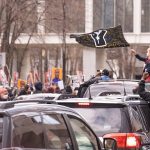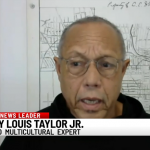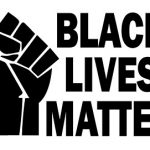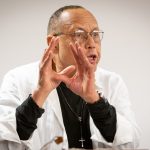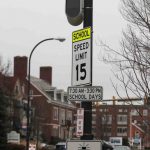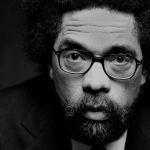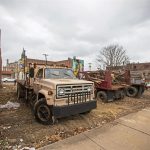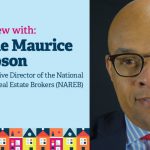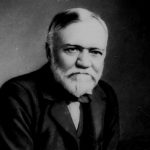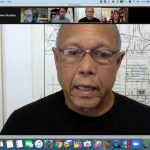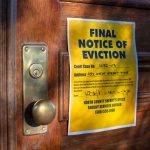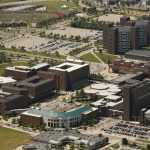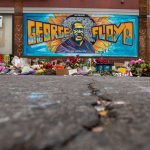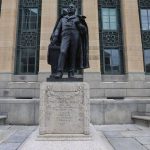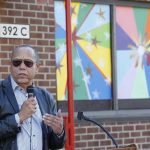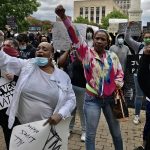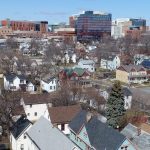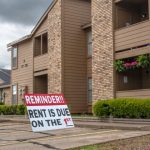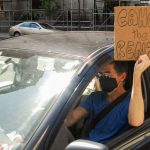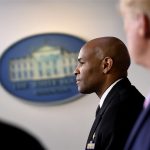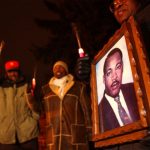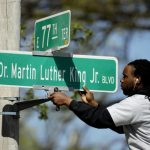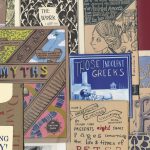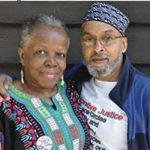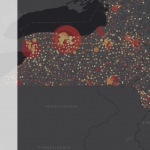From the ground up: Addressing Buffalo’s health disparities
Watch the YouTube video, here.
A formal connection between the Center for Urban Studies and the Community Health Equity Research Institute at UB is sharpening the focus on Buffalo’s built environment and its impact on the city’s social determinants of health.
To effect transformational change in Buffalo, UB’s Center for Urban Studies is joining the Community Health Equity Research Institute
Read the full article from University at Buffalo, here.
BUFFALO, N.Y. – To more powerfully address and reverse Buffalo’s entrenched health disparities, a University at Buffalo center dedicated to regenerating underdeveloped neighborhoods is joining the Community Health Equity Research Institute at UB.
“The Harder We Run” Panel Discussion
In case you missed the panel discussion for the Center’s most recent report, “The Harder We Run”, here is a zoom recording of the panel discussion: https://us02web.zoom.us/rec/share/0ZTy_hrHh_hqxZVMIgkWB4uNQ_l8ui_1B_l8cLEebdag-hszVI4a_4gvWQH8l-w0.HAXa-XGMiYa3CkDX
Mark Scheer interviews researcher Henry-Louis Taylor on new report
Reporter Mark Scheer interviews Henry-Louis Taylor, director of the Center for Urban Studies, on “The Harder We Run: The State of Black Buffalo in 1990 and the Present,” a 2021 report to the Buffalo Center for Health Equity.
Lottery for $500 monthly checks part of proposal for Buffalo’s stimulus spending
Read the full article from Buffalo News here.
“That’s a joke: $500 for 1,600 families that are probably making about $15,000 or $16,000 dollars a year?” Taylor said.
Some 68% of African-American residents in the city are renters, along with about 78% of the Latino population and 62% of the Asian-American community, he said, citing census figures.
“These families are faced with two issues: They’re paying 40, 50, 60% of their income on housing, and … many of these families, especially those who don’t own a car, have almost no money left over to do anything with,” Taylor said.
Faculty weigh in on Chauvin verdict, fight for equality
Read the full article from UBNow here.
“This victory reflected the people’s power. It was made possible by the millions who drew a line in the sand and said ‘enough.’ But history teaches us, the retrogressive forces in this country will resist. Even as they say, ‘justice was served, and this is the beginning of a new beginning,’ they will block efforts to defund the police and recreate policing as we know it. These same forces will fight reforms to improve the quality of neighborhood life among Blacks, Indigenous and people of color. They will work tirelessly to maintain the status quo. And the fightback will continue. The people will build on this ‘shining moment.’ The people will continue to the quest for that day when BIPOC will cry ‘free at last, free at last.’ This victory will cause them to keep the faith and raise the battle cry, ‘Remember George Floyd. Power to the People.’”
New UB website aims to help reverse health inequities in Buffalo
Read the full article from UBNow here.
“‘The partnership between the task force and the Community Health Equity Research Institute was instrumental in partially mitigating the deadly impact of the pandemic in communities of color in Buffalo,’ Murphy says. The vision of the website was guided chiefly by contributions from three members of the institute’s Steering Committee: Henry Louis Taylor Jr., professor of urban and regional planning, School of Architecture and Planning, and associate director of the institute; Kelly Wofford, community engagement coordinator in UB’s Center for Nursing Research in the School of Nursing; and Christopher St. Vil, assistant professor in the School of Social Work.”
Marijuana legalization in NY to lead to automatic expungement of some drug convictions
Read the full article from Democrat and Chronicle here.
“Henry Louis Taylor Jr., director of the University at Buffalo Center for Urban Studies,said expungement ‘begins to close the road from the neighborhood to the jail.’ But to create substantive change, he said, the funding set aside in the legislation must include connecting people who were incarcerated to job opportunities and other resources, as well as repairing harms done to communities by marijuana prohibition.The changes, he said, that need to come from funding have to be transformative and may include items such as housing subsidies for communities and cooperatives.Importantly,he said, the community should have a say in how the money is spent.”
Race and multicultural experts and area residents weigh-in on Rob Lederman’s use of a racial slur
Read the full story from WIVB here.
“Experts say the racial slur is meant to describe people who are mixed race and it dates back to slavery and the practice of raping female slaves. ‘Rape was institutionalized, and it meant that women were the plaything of the plantation owner to be taken whenever he chose to. As I always say, when I look in the mirror I see the color of rape,’ said Henry Louis Taylor Jr., UB director of the university’s Center for urban studies. ‘It’s a reminder of a time when African American women had no control over their bodies.'”
Dynamic student + committed med school = real progress on equity
Read the full article from The Buffalo News here.
“Collier credits the medical school’s interdisciplinary Health in the Neighborhood course taught by instructors including Henry L. Taylor Jr., director of UB’s Center for Urban Studies, and the Rev. Kinzer M. Pointer of the African American Health Equity Task Force…She ticked off a number of such social and economic issues that can impact health: redlining, older homes with lead paint, transportation inequities that make it hard to seek care, living in a food desert or a neighborhood that makes it impractical to exercise. ‘You can’t say to a person, “Go run outside” if they don’t have sidewalks,’ Collier said.”
Will the Current Focus on Black Lives Matter Lead To Lasting Change?
Read the full article from Diverse Issues in Education here.
“Every sphere — academe, government, business, sports, religion, legal, etcetera — ‘must commit to changing the way they look and function,’ Dr. Lori Martin, interim director of Louisiana State University’s African and African American Studies Program, told Diverse via email. ‘They must be prepared to disrupt and dismantle the policies and practices that perpetuate anti-Black sentiments and demonstrate a commitment that is lifelong.'”
Henry Taylor is a tireless advocate for racial justice through urban planning
Read the full article on the UB School of Architecture and Planning website here.
“As an advocate for centering the work of black heterogeneous communities, [Taylor] urges planners to delve into the mundane, the day-to-day realities of a single mother raising two children, and the varying challenges of multi-generational Black households. In the context of the pandemic and the fight against health disparities he plays a pivotal role as associate director of The Community Health Equity Research Institute, which brings UB faculty members and community leaders in Buffalo to address the disproportionate impacts of COVID-19 on communities of color.”
Rachel Lindsay Discusses Chris Harrison’s Apology and ‘Explicit’ Versus ‘Implicit’ Racism
Read the full article from Parade here.
Being aware that implicit racism exists is crucial, Dr. Taylor says. But, he adds, it’s also important for people to “engage in a lot of self-education.” “I think every white person should have a book on Blacks and Latinx that they read,” Dr. Taylor says. He specifically cites the book, Black Power: The Politics of Liberation, as a good option. Dr. Taylor also urges businesses and schools to host workshops on the issues of racism and bias. “The level of awareness about these kinds of issues is terrible,” he says.
Opponents: School zone speed cameras target ‘Buffalo’s most impoverished residents’
Read the full article from Buffalo News here.
“‘We can find no evidence that these speed zone cameras are saving people’s lives, making life safer and making the world better for the children anywhere, not just here in Buffalo. There’s no data to support that. But what there is data to support … revenue generation,’ Taylor said. ‘It’s nothing more than a revenue grabbing scheme … designed to bilk the African American community from resources.'”
Surgery launches anti-racism, health care equity initiative with West lecture
Read the full article from UBNow here.
“Cornel West, Harvard University professor, bestselling author, political activist and public intellectual, will speak via Zoom at “Beyond the Knife,” the initiative’s first public event, from 4-5 p.m. on Feb. 18. This event is free and open to the public. Register and submit questions for the question-and-answer session online.”
Buffalo-made ‘The Blackness Project,’ now on Amazon Prime, keeps dialogue open on race relations
Read the full article from Buffalo News here.
“University at Buffalo professor Henry Louis Taylor Jr., who narrates the film, contributes considerably to the documentary. Taylor rivetingly condemns Americans’ fateful choice after the Civil War to support ex-Confederates’ interests rather than build up Black Americans’ opportunities, and provides a poignant concluding call to pursue social justice.”
Crumbling Investments: Effort by city to revitalize Homewood has resulted in lingering neglect and frustration
Read the full article from Pittsburgh-Post Gazette here.
“‘In this case, I would argue that the city is a slumlord that is consciously participating in the underdevelopment of the community,’ said Henry Louis Taylor Jr., a professor in the Department of Urban and Regional Planning and associate director of the Community Health Equity Research Institute at the University of Buffalo.”
Antoine Thompson Q&A: Promoting Housing in Democracy with the National Association of Real Estate Brokers
Read the full article from MGIC Connects here.
“‘Looking back, who served as role models to you, and what did you learn from them?‘ ‘One of my role models is Dr. Henry Taylor, director of the UB Center of Urban Studies, because of his strong commitment to urban policy and his advocacy for building civic capacity to effect community change. Another is R. Donahue Peebles, who inspires me because of his success in real estate and his understanding of the role of politics in development and building wealth.'”
A snapshot of Homewood history
Read the full article from Pittsburgh Post-Gazette here.
“Henry Louis Taylor, Jr., whose research at the University of Buffalo focuses on distressed urban neighborhoods and the health of those who live there, said the trajectory of Homewood follows a familiar pattern. ‘In American cities and suburbs, the way you increase residential land value under the current system in the country [is] as whiteness and social-class exclusivity increases, values go up. As Blackness and people of color increase and social inclusivity increases, values go down,’ he said.”
Is Erie County turning red?
Watch the video and read the full article from WKBW here.
“Call it a ‘post game breakdown’ of the 2020 election in Western New York by professors at the University at Buffalo.
The question – is traditionally blue Erie County becoming republican country?…
Professor Taylor says the Trump administration has caused a deep divide and that reveals far reaching racism.
‘This is Donald Trump’s America,’ Taylor stated.
Taylor also stated that he believes democrats have ‘no vision that excites people.'”
Confronting the Causes of Residential and School Segregation
Read the full article from Housing Matters here.
“Evidence shows that government housing policies and individual practices created and sustain segregation between white and Black people and that segregation exacerbates racial wealth inequality, racial achievement gaps, and racial profiling. This 2017 study applies a “white racial frame” to explain the persistence of residential and school segregation, synthesizing more than 60 articles from the fields of sociology, economics, critical theory, and law. The authors’ frame reflects the theory that white people who hold power in the US purposefully maintain their dominance and perpetuate socioeconomic inequities based on race and ethnicity. By applying this frame, the authors shift focus from disparate outcomes by race and ethnicity to the (often white) lenders, police, educators, and politicians who shape structures of opportunity.”
UB-community partnership reducing COVID-19 deaths among African Americans
Read the full article from WGRZ, here.
“The fact that this community-university partnership was able to mitigate the high mortality among African Americans in the first wave puts us in a position to build on that achievement during this coming flu season and a possible second wave,” said Tim Murphy, MD, SUNY Distinguished Professor in the Jacobs School of Medicine and Biomedical Sciences at UB and director of the Community Health Equity Research Institute and UB’s Clinical and Translational Science Institute “And it’s something that can be replicated in other communities.”
Experts say Trump’s eviction moratorium is hard to access and will be of limited help
Read the full article from Salon, here.
“‘Without rent forgiveness, tenants will ultimately have to pay back rent along with any late-fees and penalties, or face eviction when the moratorium is lifted,’ Silverman explained. ‘It is ultimately up to landlords to decide if they are going to pursue eviction, but at some point in the future, we can anticipate that there will be a spike in evictions across the country. It could be very destabilizing to the economy at the very time that the COVID crisis ends. For renters, it will also have ripple effects on their credit history and ability to find replacement housing.'”
St. Louis couple who aimed guns at protesters makes false convention claim about Joe Biden, suburbs
Read the full article from PolitiFact, here.
“A Republican National Convention speaker falsely claimed that the Democratic Party under Joe Biden would ‘abolish the suburbs altogether by ending single-family zoning.’ That’s not true. The claim came from Patricia McCloskey, a St. Louis lawyer who, along with her husband, Mark, is facing felony charges for pointing guns at protesters marching outside their home…’This is a red herring, pure and simple,’ said Robert Silverman, a professor or urban and regional planning at the University of Buffalo. ‘Zoning is a local function in the United States, and the suggestions made in the McCloskeys’ speech are patently false.'”
UB strips Fillmore, Putnam, Porter names from buildings, facilities
Read the full article from Buffalo News, here.
“Advocates for racial justice celebrated a decision by the University at Buffalo to strip the names of three historic figures from university buildings, facilities and roads because they supported slavery or promoted racist policies and values. ‘I think it’s a good move, and I think symbolism is important,’ said Henry Louis Taylor, a professor at UB’s Department of Urban and Regional Planning. ‘For the nation to deal with the issues of race in this country, we have to be honest about our history.'”
MFSA holds virtual discussion on race, racism at UB
Read the full article from UBNow, here.
Henry Louis Taylor Jr., professor in the Department of Urban and Regional Planning and director of the Center for Urban Studies, outlined UB’s history in addressing racism on campus and in the community. From the late 1960s to the mid-1990s, UB built an infrastructure, including launching educational programs and hiring faculty members of color, to link UB to the Black community, he said.
But that infrastructure dwindled over the past two decades, a result of declining government support for public education, as well as flawed university efforts to address these issues, Taylor said. He called upon UB leadership to reinvest in these programs, and tackle race and racism in a more direct manner.
“I theorize that whenever race is not explicitly stated, whiteness becomes the default group, and people of color are pushed to the margins,” he said.
Those who were unable to attend the live event can watch it online.
Urban planning as a tool of white supremacy – the other lesson from Minneapolis
Read the full article from The Conversation, here.
The legacy of structural racism in Minneapolis was laid bare to the world at the intersection of Chicago Avenue and East 38th Street, the location where George Floyd’s neck was pinned to the ground by a police officer’s knee. But it is also imprinted in streets, parks and neighborhoods across the city – the result of urban planning that utilized segregation as a tool of white supremacy.
Today, Minneapolis is seen to be one of the most liberal cities in the U.S. But if you scratch away the progressive veneer of the U.S.‘s most cyclable city, the city with the best park system and sixth-highest quality of life, you find what Kirsten Delegard, a Minneapolis historian, describes as “darker truths about the city.”
A reckoning: Reconsidering Millard Fillmore’s legacy
Read the full article from Buffalo News, here.
Millard Fillmore gets little love from presidential historians, but he’s enjoyed favorite son status in Buffalo for more than 150 years.
That’s beginning to change.
The 13th president lived here for years before and after his term in the White House. His fingerprints are on many educational and cultural institutions, from the University at Buffalo to Buffalo General Medical Center, and his name and image are sprinkled throughout greater Buffalo.
Now, Fillmore’s signing of the Compromise of 1850 – which included the loathsome Fugitive Slave Act – and his unsuccessful presidential run as a member of the anti-immigrant, anti-Catholic Know Nothing Party are raising questions about his lofty local status.
With faculty nudge, can UB lead on social justice?
Read the full article from Buffalo News, here.
A few years ago, University at Buffalo President Satish Tripathi used his annual address to trumpet the UB 2020 strategic plan as laying the groundwork for propelling Buffalo Niagara in everything from health care and the arts to business and industry.
But with that target year now here and bringing a whole new set of issues – or, rather, an acknowledgement of issues that Blacks have long tried to raise – UB’s faculty is pushing one of the region’s major institutions to take on something else: systemic racism.
In an overwhelming vote a couple of weeks ago, United University Professions – which represents most faculty – passed a resolution condemning “police violence against African American, Indigenous and Latino/Latina residents,” opposing “the militarization of police and its impact on communities of color and on peaceful protests,” and supporting “reallocation of Buffalo resources from policing toward investment in Buffalo’s low-income communities of color.”
Black applicants are more likely to be denied mortgages, study finds
Read the full article Marketplace, here.
Traditional measures of risk like debt-to-income ratios disproportionately hurt Black borrowers, said Henry Louis Taylor Jr., a professor of urban and regional planning at the University of Buffalo.
“They’re not going to do well on that because of the low incomes that they have traditionally and because of the debts that they acquire just trying to make ends meet,” he said.
‘UB Black faculty are disappointed with UB response to BLM movement’
Read the full article from The Spectrum, here.
UB Professor Henry Louis Taylor, Jr., who has spent decades studying and writing about inequality, called the UB responses “just short of pathetic.”
Taylor, a professor in the department of Urban and Regional Planning, believes Foster’s letter was “right on target.” He and Foster are both executive members of the SUNY Black faculty group.
“I think it shows absolutely no understanding of the challenges that we face at this moment in time and they just oughta stop and give this to somebody that knows what they’re doing or talk to somebody that knows what they’re doing because it’s been pathetic,” Taylor said. “You know, this university has been backsliding in a lot of areas as it relates to race and class.”
‘It was never just about Floyd’: Protests reflect anger over inequality, neglect
Read the full article from Buffalo News, here.
“Taylor, of the Center for Urban Studies, said he does see hope for structural change this time, of the type that Buffalo’s black community didn’t get in 1967. A broad, diverse coalition of activists has mobilized around Buffalo’s inequities, he said: not only in the criminal justice system, but in neighborhood development, housing and education.”
“How Do We Get More Power?”
Read the full article from Open Society Foundations, here.
India Walton signed the lease: $1,200 a month for a modest, gut-renovated one-bedroom, $200 less than the listed price because she had her own appliances. Still, says Walton, “in this neighborhood? $1,200 was unheard of.”
At least it used to be. After decades of disinvestment and neglect, the Fruit Belt was beginning to boom.
The catalyst was right next door: a rapidly expanding medical complex, staffed by a growing number of doctors, nurses, and technicians looking for a nearby place to live.
In many ways, it was a familiar story: an African American neighborhood, long neglected by the city, suddenly deemed “desirable” and, in turn, overrun by new, more expensive development. But the story of the Fruit Belt, so named for the orchards planted there in the 1800s [PDF], went in an unexpected direction. As the medical campus grew, the small, sloping neighborhood sitting in its shadow—whose black population boomed following World War II—decided that its fate had not yet been sealed.
Mass Evictions Predicted as Short-Term Economic Relief Runs Out
Read the full article from Planetizen, here.
Henry Louis Taylor, Jr., a professor of urban and regional planning at the University of Buffalo, is featured in an ABC News article about the ongoing risk of mass evictions as the country’s millions of renters collides with tens of millions of new unemployment claims across the country.
Taylor said that “federal and statewide eviction moratoriums are based on COVID-19 timetables that are ‘too short’ and don’t consider predictions from medical experts that the pandemic could persist into the fall and beyond, as public health officials have suggested,” according to the article, written by Deena Zaru.
‘Mass evictions’ on the horizon as US confronts coronavirus housing crisis: Advocates
Read the full article from ABC News, here.
The first of the month is daunting for many low and middle-income Americans who will be struggling to pay their rent for the second time since the coronavirus pandemic essentially shut down the U.S. economy.
More than 30 million Americans have filed for unemployment insurance since the COVID-19 crisis hit the U.S. in March, and despite a range of temporary federal and state eviction moratoriums, some Americans are still being served eviction notices amid a public health crisis that requires many people to stay at home.
Henry Louis Taylor, Jr., a professor of urban and regional planning at the University of Buffalo, said that federal and statewide eviction moratoriums are based on COVID-19 timetables that are “too short” and don’t consider predictions from medical experts that the pandemic could persist into the fall and beyond, as public health officials have suggested.
Black health experts say surgeon general’s comments reflect lack of awareness of black community
Read the full article from NBC News, here.
For Dr. Henry Louis Taylor, Jr., a University of Buffalo professor and researcher, there isn’t much of a controversy. The surgeon general missed the mark. And it’s not what he said, but what he did not say.
“It is irresponsible to talk about the elimination of drugs and alcohol without talking about eliminating the neighborhood-based social determinants that produce drug and alcohol abuse,” Taylor told NBC News.
The ‘step-up’ question does not reflect the realities of black America. It suggests that African Americans themselves are responsible for their plight.
“The Adams statement is, at best, irresponsible and, at worst, reflective of systemic structural racism,” Taylor added. “Black people live under enormous stress in places that are service deserts that lack gyms and are not suitable for jogging or even walking. At the same time, alcohol and tobacco companies target these communities. The ‘step-up’ question does not reflect the realities of black America. It suggests that African Americans themselves are responsible for their plight.”
As nation honors King, some local governments ignore the holiday
Read the full article from Buffalo News, here.
“It’s a battle over symbolic messages,” said Henry Louis Taylor Jr., a University at Buffalo professor who studies race and class issues and urban affairs. “The holiday is a symbol and a message that is connected to it. Resistance to that holiday is opposition to that message and everything that it is about.”
The effort to make King’s birthday a national holiday began days after the iconic African American civil rights leader was assassinated in 1968, according to an account from the History channel.
Will Buffalo Become a Climate Change Haven?
Read the full article from CityLab, here.
“Say Buffalo becomes this magnet that’s attracting everybody that’s looking for a good place to live. It will become the East Coast version of San Francisco,” said Henry Louis Taylor Jr., director of the Center for Urban Studies at the University at Buffalo School of Architecture and Planning. “Will we essentially recreate what I call the ‘White City’? The White City is a city for white people and other groups who can manage to afford to live there.”
Keenan, the Harvard climate adaptation expert, said Buffalo could become another example of climate gentrification, a phenomenon already underway in Miami, for example, where property values are rising faster in high-elevation, low-income neighborhoods that are better protected against sea-level rise. Keenan said that climate gentrification exists on both the small and large scale.
Taylor said that parts of downtown Buffalo with new offices and apartments have already seen an exodus of black residents. He believes that, rather than focusing on luring developers to build loft apartments and boutique office buildings, what he referred to as “the San Francisco model,” the city needs to be willing to preserve affordable housing.
“The San Francisco, the Chicago model, the Washington, D.C., model, the New York City model — that’s the model that they’re using here. And they are caught between this idea that there is either this model that they’re using, or death,” Taylor said. “They’re frustrated because they can’t figure out how to get this square peg called ‘equity, equality, justice’ into this round hole called ‘the market.’”
Letter: Buffalo should have an MLK Boulevard
Read the full article from Buffalo News, here.
On Nov. 5, in a shameful move, voters in Kansas City chose to remove Martin Luther King Jr.’s name from one of its main thoroughfares. I found this disheartening. What were they thinking? Voters in Buffalo wouldn’t do something like this. Then, I realized that Buffalo is one of the only major cities in the country without a thoroughfare named Martin Luther King Jr. Boulevard. There are more than 900 streets named after MLK in the country, but there is no major street honoring MLK in Western New York.
Granted, in many places MLK Boulevard is found in the poorest section of a city. This is one instance where Buffalo’s late arrival to the party can be informed by mistakes made in other places and turned into an opportunity to do better.
Main Street in Buffalo is known as the dividing line between the predominantly white West Side of the city and the predominantly black East Side. It is time to change this image, erase this dividing line, and transform it into a symbol of unity. Buffalo can do better than places like Kansas City. Buffalo can send a message to the rest of the county that its central corridor is no longer a dividing line, but a place where the entire city comes together.
It is time for the Mayor’s Office and Common Council to come together and formally put a referendum on the 2020 ballot to change the name of Main Street to Martin Luther King Jr. Boulevard. Why not?
Exhibit highlights those working for better health
Read the full article from UBNow, here.
“The Future of Health in the City,” a new exhibition presented by the UB Art Galleries that highlights individuals working together to bring better health and healing to the Buffalo community, will open on Oct. 8 in the Connect Gallery at the Conventus building with a public reception from 5-7 p.m.
The UB Art Galleries is presenting the exhibition of portraits by artist Charmaine Wheatley in partnership with the University of Rochester Medical Center and in collaboration with the Buffalo Niagara Medical Campus Innovation Center, the UB Center for Medical Humanities and Restoration Society Inc.
“These portraits are about hope; they show a dreamscape of social change,” said Henry Louis Taylor Jr. director of the Center for Urban Studies in UB’s School of Architecture and Planning and another of Wheatley’s subjects. “They are about the possibility of building a future city where well-being and wholeness reign.”
Arts beat: Innovative art, Mark Twain and a Musical Feast
Read the full article from the Buffalo News, here.
The Great Moments histories are the creation of Buffalo-based artist Caitlin Cass, whose work also has appeared in The New Yorker, The Lily and The Nib. For this exhibition, Cass has added original art and, with handwritten sidebars, says, “I will analyze my own canon in all of its messy, brazen eagerness.”
In a press release, Cass explains that she created the Great Moments comics in an effort “to make a history that prioritized failure instead of victory … the anticlimactic fizzling out instead of the path to progress.”
…
In describing the images, Henry Louis Taylor Jr. of UB’s Center for Urban Studies said, “These portrait are about hope; they show a dreamscape of social change. They are about the possibility of building a future city where well-being and wholeness reign.”
The Futures Garden
Read the full article from Buffalo Rising, here.
Just when you think that gardens couldn’t be any greater in Buffalo, comes along The Futures Garden. This Grassroots Garden is located directly across from the Marva J Daniel Futures Preparatory School #37 (Futures Phoenix), which is just down Carlton Street from The Medical Campus. On my way to visit a friend who lives a few doors away from the garden, I made a pitstop to inspect the sustainable grounds in all of their glory.
This garden has it all – giant rain barrels, composting, raised beds, beautiful signage, places to sit and ponder, solar power, hand painted garbage cans, flowers, veggies, and even a mini library. To me, this garden is about as inspirational as it gets.
Prisoners Are People Too Announce Regional Conference
Read the full article from Challenger Community News, here.
Prisoners Are People Too is hosting a Regional Conference in collaboration with the Alliance of Families for Justice on Friday, May 3, from 5:30-8 p.m. and Saturday, May 4 from 8:30a.m.-3:30p.m. at Mt. Olive Baptist Church, 701 East Delavan Avenue . The conference, whose theme is “Changing Criminal Injustice,” will highlight the strategies that we can use to improve the lives of the incarcerated, the formerly incarcerated, and the victims.
Activist-scholar Dr. Henry Louis Taylor, Jr. will be the keynote speaker on Saturday, May 4. Dr. Taylor is the Founding Director of the Center for Urban Studies at the University at Buffalo School of Architecture and Planning. His research, focusing on issues of race and class has made him an expert in assessing systemic factors, fueled by racism, that frequently lead to criminal convictions.
The cost of suspending driver’s licenses
Read the full article from Investigative Post, here.
The laws are making criminals out of tens of thousands of residents and straining court systems; yet in the case of debt-related suspensions, several experts said they provide little to no public safety benefit.
“We are taking people who are already on the economic edge, we are criminalizing them and increasing the burdens and hardships on their lives,” said Henry Louis Taylor Jr., a professor who studies race and class issues at the University at Buffalo.
Each year, a torrent of people with suspended license charges wind up in Buffalo City Court, clogging up judges’ dockets and bogging down public defenders.
Another Voice: Scammer isn’t the real source of blight on Buffalo’s East Side
Read the full article from Buffalo News, here.
A 2017 housing opportunity strategy study commissioned by the city found that most East Side housing units are moderately to severely distressed and located in underdeveloped neighborhoods with low market demand.
HouHou should be punished for his racketeering, but more important, Buffalo’s prime blighters should be exposed. The real predatory profiteers are the rental property owners who make hyper-profits by charging high rents for poorly maintained and distressed rental housing units, and the land speculators who purchase properties and hold onto them without making any improvements until more profitable opportunities can be found.
The City of Buffalo is also complicit in the East Side neighborhood blight. The city poorly maintains sidewalks, streets and vacant lots in those neighborhoods. And, their shamefully weak rental registration process makes possible the existence of a prosperous low-income rental market that exploits the poor and those on the economic margin.
Henry Louis Taylor Jr., Ph.D., is director of the UB Center for Urban Studies.



